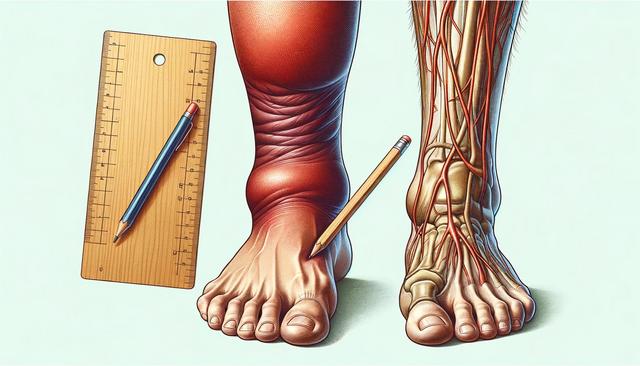What Causes Angioedema Related Leg Swelling?
Angioedema is a condition characterized by sudden swelling beneath the skin, often caused by an allergic reaction, medications, or hereditary factors. When it affects the lower limbs, understanding what causes angioedema related leg swelling becomes crucial for effective management. Common triggers include:
- Allergic reactions to food, insect stings, or medications
- Side effects from angiotensin-converting enzyme (ACE) inhibitors
- Genetic mutations leading to hereditary angioedema
- Autoimmune disorders and infections
In the lower extremities, the swelling can occur without accompanying hives, making it harder to diagnose. Identifying the root cause helps in tailoring treatment strategies and preventing future episodes.
How to Identify Angioedema Symptoms in Lower Limbs
Recognizing how to identify angioedema symptoms in lower limbs is essential for early intervention. Symptoms may include a sudden onset of swelling that is non-pitting, meaning it does not leave a dent when pressed. Unlike typical swelling from injuries or infections, angioedema-related swelling may:
- Appear without redness or warmth
- Be painful or cause a tingling sensation
- Occur without an obvious external cause
- Fluctuate in severity over a short period
Sometimes, swelling is accompanied by abdominal pain or difficulty breathing if the angioedema impacts internal organs. Seeking prompt medical evaluation ensures appropriate diagnosis and prevents complications.
Difference Between Fluid Retention and Angioedema
Understanding the difference between fluid retention and angioedema is important for selecting the right treatment path. Fluid retention, or edema, typically develops slowly and is often linked to chronic conditions such as heart failure, kidney disease, or venous insufficiency. In contrast, angioedema:
- Develops rapidly, often within minutes to hours
- Is usually localized to specific areas
- Is often triggered by immune responses or genetic factors
- May not respond to diuretics commonly used for fluid retention
Clarifying the underlying cause not only aids treatment but also prevents unnecessary interventions that may not address the actual issue.
Lower Extremity Swelling Care Strategies
Effective lower extremity swelling care involves a combination of immediate relief and long-term management strategies. For angioedema-related swelling, care approaches may include:
- Identifying and avoiding known triggers
- Using antihistamines or corticosteroids to reduce swelling
- Wearing compression garments to support circulation
- Elevating the legs to decrease fluid accumulation
In cases where hereditary angioedema is diagnosed, specialized medications targeting specific pathways in the immune response may be prescribed. Regular follow-up with healthcare providers ensures that the care plan remains effective and adjusts to any changes in condition.
Chronic Leg Swelling Treatment Options and Managing Recurrent Leg Edema Linked to Angioedema
When dealing with persistent symptoms, exploring chronic leg swelling treatment options becomes necessary. Treatments focus on both symptom management and addressing the underlying cause. Options may include:
- Prophylactic medications for hereditary angioedema
- Immunotherapy for allergy-induced angioedema
- Regular use of compression therapy
- Physical therapy to improve lymphatic drainage
Managing recurrent leg edema linked to angioedema demands a proactive approach. Patients benefit from maintaining a symptom diary, adhering to prescribed treatments, and having an emergency plan in place for acute episodes. Education on recognizing early warning signs can significantly reduce the severity and frequency of swelling events.
Conclusion: Navigating Angioedema-Related Leg Swelling with Confidence
Understanding the nuances of angioedema-related leg swelling empowers individuals to seek timely care and adopt effective management strategies. By learning what causes angioedema related leg swelling, recognizing how to identify angioedema symptoms in lower limbs, and understanding the difference between fluid retention and angioedema, patients can take proactive steps toward better health. Incorporating lower extremity swelling care into daily routines and exploring chronic leg swelling treatment options ensures a comprehensive approach. Managing recurrent leg edema linked to angioedema may require ongoing adjustments, but with informed strategies, individuals can achieve more consistent symptom control and improved quality of life.




Leave a Reply